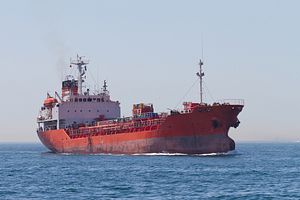Surging oil prices caused by Iraq’s latest crisis threaten another oil shock for Asia, analysts have warned. With India and Indonesia particularly exposed, can the region ride out the storm?
On Thursday, Brent crude reached a nine-month high of more than $115 a barrel, amid concerns that escalating instability in Iraq could curb supply from the world’s sixth-biggest oil exporter.
Iraqi government forces were battling Sunni rebels over control of the nation’s biggest refinery at Baiji, with U.S. President Barack Obama pledging to send military advisors and conduct “targeted” air strikes if necessary to assist the beleaguered Baghdad government.
The Baiji plant produces 300,000 barrels a day (bpd) and has already been shut down. Should it stay shut for an extended period, Iraq could need to import more oil to meet its own needs, further tightening oil markets.
“This would stress an already reasonably tight global balance further, depending on its duration,” Reuters quoted oil analysts at Vienna-based consultancy JBC Energy as saying.
Oil prices could have climbed even higher if not for the effects of the U.S. shale boom on global supplies, Nansen Saleri of Quantum Reservoir Impact told Bloomberg News.
“Were it not for the increase in U.S. production, that’s gained close to 2 million barrels a day, we would see a $20 to $30 rise in prices,” Saleri said. “The surge in U.S. production is a hugely stabilizing factor.”
U.S. crude output reached nearly 8.5 million bpd last week, its highest level since 1986, with much of the increased output from shale production in North Dakota and Texas. The higher U.S. production has helped offset supply disruptions in the Middle East, although according to Saleri, much of Iraq’s production is in government- and Kurd-controlled areas in Basra province and Kirkuk, respectively.
However, an extended increase in crude oil prices could weigh on the global economy as well as hitting import-dependent Asian nations. According to the U.S. Energy Information Administration, although the United States was the world’s top net oil importer as of 2012, it was followed by China, Japan, India and South Korea.
In September 2013, China’s net imports of petroleum and other liquids exceeded those of the United States on a monthly basis, making it the largest net importer. The Diplomat’s Zachary Keck has questioned whether Beijing might take a more active role in the Iraq crisis, given China’s reported $4 billion investments in Iraq’s oil industry and its position as the destination for half of Iraq’s oil exports.
ASEAN, India Threatened
Yet ANZ Research has warned that the increasing oil price volatility could not have come at a worse time for the ASEAN region, particularly Indonesia and Singapore.
According to ANZ, “ASEAN has been coping and adapting to oil prices above $100 per barrel, but a sustained upward elevated trajectory of oil prices could bite growth and add to inflation,” causing central banks to tighten monetary policy further.
An oil price shock could cause Indonesia’s inflation to jump by a potential 3.7 percentage points, or even more should the government adjust fuel subsidies. Singapore “would see the largest impact on growth, given its significant trade exposure.”
The lower terms of trade would then put downward pressure on exchange rates, further exacerbating the impact on inflation, ANZ said.
“In short, if oil prices remain on an elevated upward trajectory, inflation looks set to return as the bedfellow of growth in ASEAN in 2014. Monetary policy tightening must accompany that marriage. For some time, we have been forecasting the commencement of policy tightening cycles across ASEAN in the second half of 2014. Recent price developments and supply side dynamics only reinforce our bias on that front,” it said.
China has diversified its oil supplies to countries including Saudi Arabia, Oman, the United Arab Emirates, Angola, Venezuela and Russia. However, continued triple-digit oil prices could curb any hopes of resuming its former breakneck speed of economic growth.
Nevertheless, India is seen as particularly exposed given that imports supply 75 percent of its oil needs. According to Barclays, a $10 price rise in the crude price would cut India’s growth rate by 0.5 percentage point.
“If crude goes up, India’s import bill goes up, so the cost of fuel and fertilizer subsidies go up, and the rupee comes under immediate pressure,” Bhaskar Chakraborty, energy analyst at India Infoline, told the Financial Times.
Japan’s state-run JOGMEC has told Reuters about plans to increase its investments in oil and gas, while trading house Mitsui & Co has also discussed taking majority stakes in projects as the energy-poor nation moves to secure stable long-term supplies.
While ANZ and other analysts are not expecting Brent crude prices to advance much beyond $115 a barrel, a worsening of the Iraq conflict could see these forecasts changed. Reluctant to intervene directly, Asia will be hoping that Washington can prop up the Iraqi government, and with it the region’s own economic interests.

































